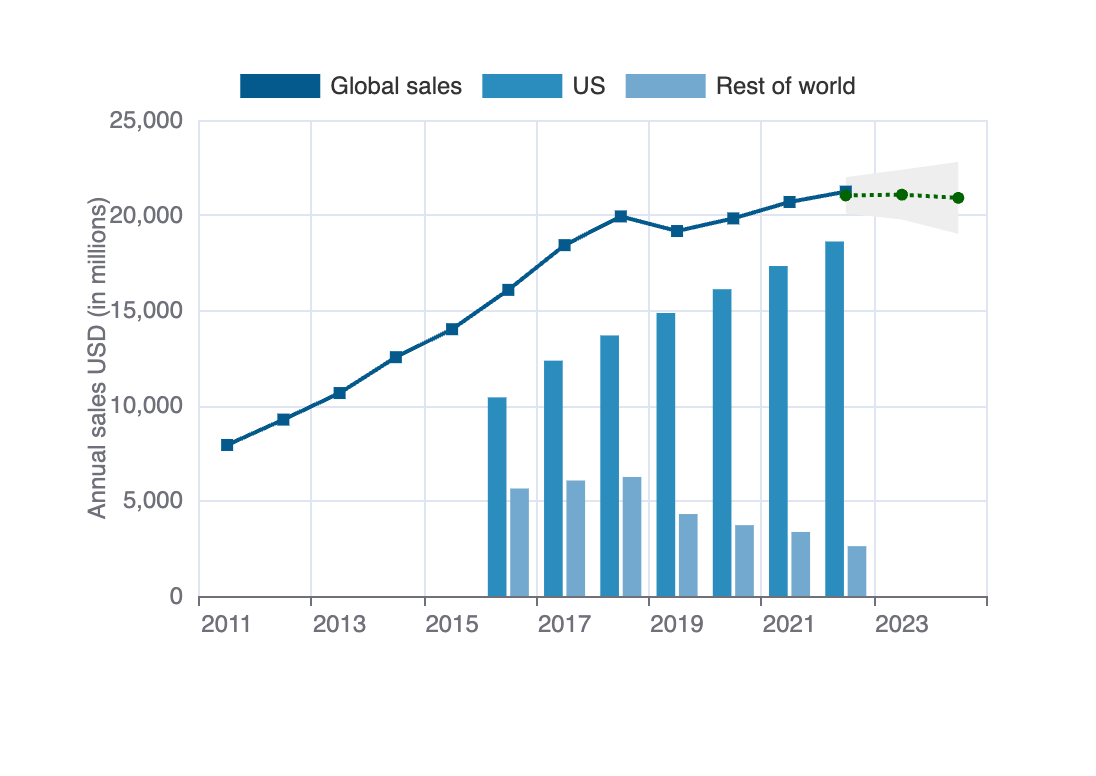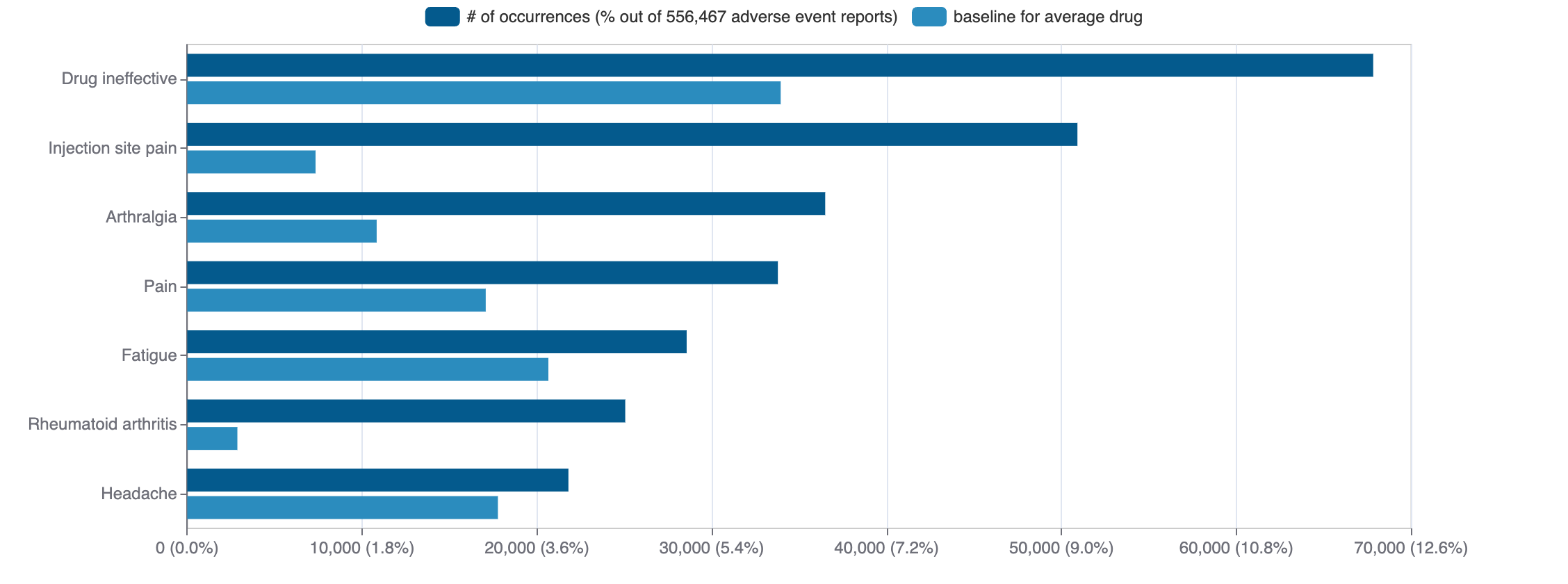Kaletra(lopinavir)
Kaletra (lopinavir) is a small molecule pharmaceutical. Lopinavir was first approved as Kaletra on 2000-09-15. It is used to treat acquired immunodeficiency syndrome in the USA. It has been approved in Europe to treat HIV infections.
Download report
Favorite
COVID-19
Case Study: COVID-19
Commercial
Therapeutic Areas
Therapeutic Area | MeSH |
|---|---|
| infections | D007239 |
| urogenital diseases | D000091642 |
| immune system diseases | D007154 |
Trade Name
FDA
EMA
Combinations
Kaletra (generic drugs available since 2016-12-27)
Drug Products
FDA
EMA
New Drug Application (NDA)
New Drug Application (NDA)
Abbreviated New Drug Application (ANDA)
Abbreviated New Drug Application (ANDA)
Labels
FDA
EMA
Brand Name | Status | Last Update |
|---|---|---|
| kaletra | New Drug Application | 2020-10-01 |
| lopinavir and ritonavir | ANDA | 2023-03-06 |
Indications
FDA
EMA
Indication | Ontology | MeSH | ICD-10 |
|---|---|---|---|
| acquired immunodeficiency syndrome | EFO_0000765 | D000163 | B20 |
Agency Specific
FDA
EMA
No data
Patent Expiration
No data
HCPCS
No data
Clinical
Clinical Trials
281 clinical trials
View more details

Mock data
Subscribe for the real data
Subscribe for the real data
Indications Phases 4
Indication | MeSH | Ontology | ICD-10 | Ph 1 | Ph 2 | Ph 3 | Ph 4 | Other | Total |
|---|---|---|---|---|---|---|---|---|---|
| Hiv infections | D015658 | EFO_0000764 | B20 | 14 | 42 | 44 | 44 | 30 | 166 |
| Hiv | D006678 | O98.7 | 6 | 6 | 8 | 12 | 6 | 35 | |
| Covid-19 | D000086382 | U07.1 | — | 12 | 9 | 5 | 4 | 26 | |
| Acquired immunodeficiency syndrome | D000163 | EFO_0000765 | B20 | 1 | — | 3 | 7 | 2 | 13 |
| Tuberculosis | D014376 | EFO_0000774 | A15-A19 | 2 | 4 | — | 4 | 1 | 11 |
| Healthy volunteers/patients | — | 4 | — | — | 2 | 1 | 7 | ||
| Infections | D007239 | EFO_0000544 | 2 | 2 | 1 | 1 | — | 6 | |
| Pregnancy | D011247 | EFO_0002950 | Z33.1 | 1 | 2 | 3 | 1 | — | 6 |
| Sars-cov-2 | D000086402 | — | 3 | 2 | 1 | 1 | 5 | ||
| Pneumonia | D011014 | EFO_0003106 | J18 | — | 1 | 1 | 1 | 2 | 5 |
Show 12 more
Indications Phases 2
Indication | MeSH | Ontology | ICD-10 | Ph 1 | Ph 2 | Ph 3 | Ph 4 | Other | Total |
|---|---|---|---|---|---|---|---|---|---|
| Hepatitis c | D006526 | B19.2 | 2 | 1 | — | — | 2 | 5 | |
| Disease | D004194 | EFO_0000408 | R69 | — | 1 | — | — | — | 1 |
| Parasitemia | D018512 | 1 | 1 | — | — | — | 1 | ||
| Hepatitis b | D006509 | — | 1 | — | — | — | 1 | ||
| Brain neoplasms | D001932 | EFO_0003833 | C71 | — | 1 | — | — | — | 1 |
| Glioblastoma | D005909 | EFO_0000515 | — | 1 | — | — | — | 1 | |
| Glioma | D005910 | EFO_0000520 | — | 1 | — | — | — | 1 | |
| Gliosarcoma | D018316 | — | 1 | — | — | — | 1 | ||
| Ependymoma | D004806 | — | 1 | — | — | — | 1 | ||
| Astrocytoma | D001254 | EFO_0000271 | — | 1 | — | — | — | 1 |
Show 1 more
Indications Phases 1
Indication | MeSH | Ontology | ICD-10 | Ph 1 | Ph 2 | Ph 3 | Ph 4 | Other | Total |
|---|---|---|---|---|---|---|---|---|---|
| Pharmacokinetics | D010599 | 1 | — | — | — | — | 1 | ||
| Insulin resistance | D007333 | EFO_0002614 | 1 | — | — | — | — | 1 | |
| Therapeutic equivalency | D013810 | 1 | — | — | — | — | 1 | ||
| Drug interactions | D004347 | 1 | — | — | — | — | 1 | ||
| Hypertriglyceridemia | D015228 | EFO_0004211 | 1 | — | — | — | — | 1 |
Indications Without Phase
Indication | MeSH | Ontology | ICD-10 | Ph 1 | Ph 2 | Ph 3 | Ph 4 | Other | Total |
|---|---|---|---|---|---|---|---|---|---|
| Viral pneumonia | D011024 | EFO_0007541 | J12.9 | — | — | — | — | 2 | 2 |
| Wasting syndrome | D019282 | R64 | — | — | — | — | 1 | 1 | |
| Cytokine release syndrome | D000080424 | D89.83 | — | — | — | — | 1 | 1 | |
| Drug-related side effects and adverse reactions | D064420 | T88.7 | — | — | — | — | 1 | 1 | |
| Neurobehavioral manifestations | D019954 | EFO_0004364 | — | — | — | — | 1 | 1 | |
| Medication adherence | D055118 | EFO_0006344 | — | — | — | — | 1 | 1 | |
| Child behavior | D002652 | — | — | — | — | 1 | 1 | ||
| Biliary liver cirrhosis | D008105 | K74.3 | — | — | — | — | 1 | 1 | |
| Coronavirus | D017934 | — | — | — | — | 1 | 1 | ||
| Hodgkin disease | D006689 | C81 | — | — | — | — | 1 | 1 |
Epidemiology
Epidemiological information for investigational and approved indications
View more details
Drug
General
| Drug common name | LOPINAVIR |
| INN | lopinavir |
| Description | Lopinavir is a dicarboxylic acid diamide that is amphetamine is substituted on nitrogen by a (2,6-dimethylphenoxy)acetyl group and on the carbon alpha- to nitrogen by a (1S,3S)-1-hydroxy-3-{[(2S)-3-methyl-2-(2-oxotetrahydropyrimidin-1-yl)butanoyl]amino}-4-phenylbutyl group. An antiretroviral of the protease inhibitor class, it is used against HIV infections as a fixed-dose combination with another protease inhibitor, ritonavir. It has a role as an antiviral drug, a HIV protease inhibitor and an anticoronaviral agent. It is a member of amphetamines and a dicarboxylic acid diamide. |
| Classification | Small molecule |
| Drug class | antivirals: HIV protease inhibitors (saquinavir type) |
| Image (chem structure or protein) | |
| Structure (InChI/SMILES or Protein Sequence) | Cc1cccc(C)c1OCC(=O)N[C@@H](Cc1ccccc1)[C@@H](O)C[C@H](Cc1ccccc1)NC(=O)[C@H](C(C)C)N1CCCNC1=O |
Identifiers
| PDB | — |
| CAS-ID | 192725-17-0 |
| RxCUI | 195088 |
| ChEMBL ID | CHEMBL729 |
| ChEBI ID | 31781 |
| PubChem CID | 92727 |
| DrugBank | DB01601 |
| UNII ID | 2494G1JF75 (ChemIDplus, GSRS) |
Target
Agency Approved
No data
Alternate
No data
Variants
Clinical Variant
No data
Financial
Kaletra - AbbVie
$
€
£
₣

Mock data
Subscribe for the real data
Subscribe for the real data

Mock data
Subscribe for the real data
Subscribe for the real data
Tabular view
Trends
PubMed Central
Top Terms for Disease or Syndrome:

Mock data
Subscribe for the real data
Subscribe for the real data
Additional graphs summarizing 25,646 documents
View more details
Safety
Black-box Warning
No Black-box warning
Adverse Events
Top Adverse Reactions

Mock data
Subscribe for the real data
Subscribe for the real data
69 adverse events reported
View more details
Premium feature
Learn more about premium features at pharmakb.com
Learn more
